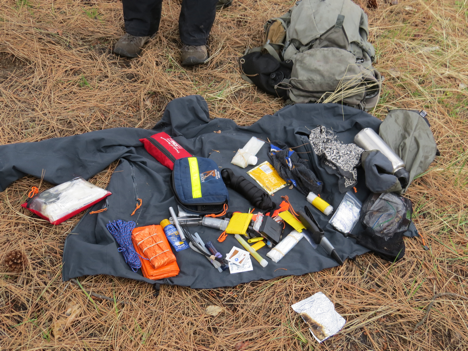
Aerie Backcountry Medicine - Saturday 4/13 & Sunday 4/14
Block title

On Saturday April 13th and Sunday April 14th, Aerie Backcountry Medicine brought 24 students, 4 staff and 4 additional volunteers (to act as patients) to MPG Ranch. As part of Aerie’s semester long Wilderness EMT class, students came to the ranch for a weekend focused on wilderness survival skills and scenarios that put those skills to the test.
The Wilderness EMT offered through Aerie is an intense class that teaches students how to respond to traumatic and medical situations. Students learn how to manage patients in the front country where resources are more widely available and also in the backcountry where resources are often scarce. The class essentially combines a traditional EMT certification with a Wilderness First Responder. When students graduate they are nationally registered EMT’s and could ride on an ambulance crew, but with a focus on backcountry skills they are better able to improvise care when the best case scenario is not what’s at hand.

This photo shows a survival kit that an instructor has pulled apart to show the contents to students.
Aerie’s staff members are highly experienced and very knowledgeable. The class illustrated this as instructors taught wilderness survival one minute and patient care the next.

Students improvised tarp shelters. The periodic squalls throughout the day drove home the need to build adequate shelter. Instructors then had students create shelters without any prefab materials, using only what the landscape provided.

This photo shows the back of a classic debris hut in the style taught by Tom Brown Jr. of the Tracker School. This structure was designed for environments where leaf litter is abundant.

This photo shows the front side of the debris hut. Instructors left the ribs exposed to show how it was constructed. The shelter is essentially an ‘A’ frame tent stuffed with leaves and covered with leaves to an ideal depth of 3-4 feet. This hut has a grass door that angles away from the main interior space. It would be a claustrophobic way to spend the night, but preferable to hypothermia in cold temperatures.

Students broke into teams to construct shelters from material available on the floodplain. Both teams opted for lean-to's built from the ample supply of driftwood.

This photo shows an Aerie instructor discussing the finer points of shelter construction with students.



















